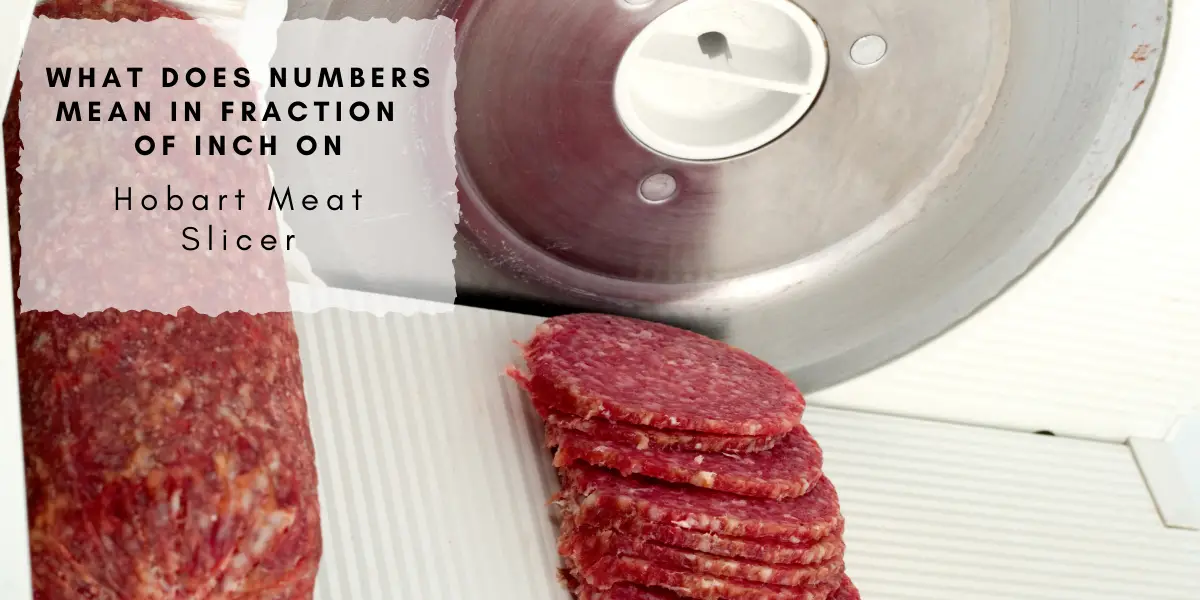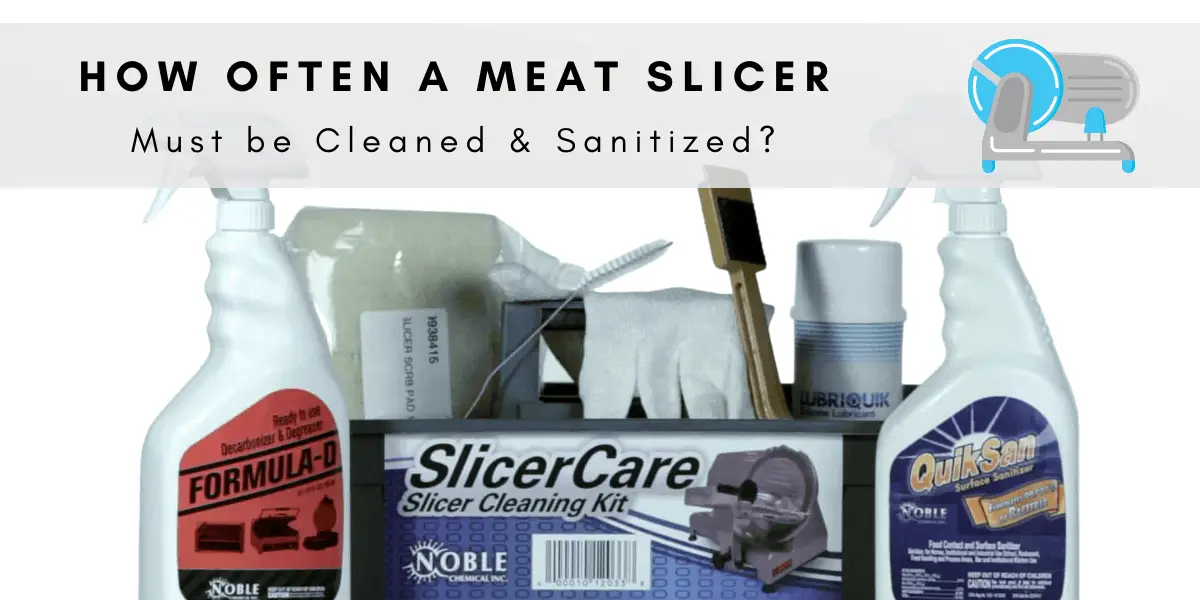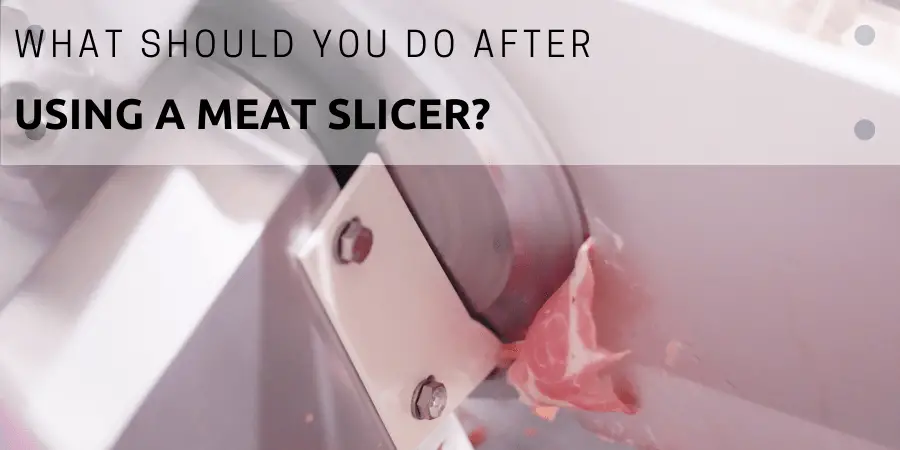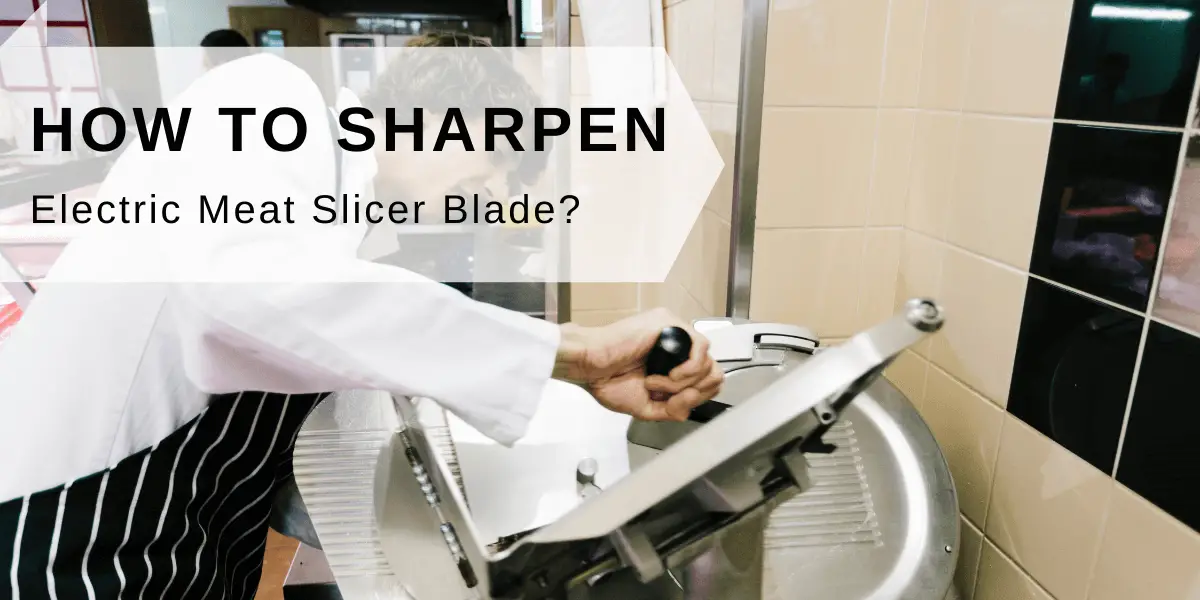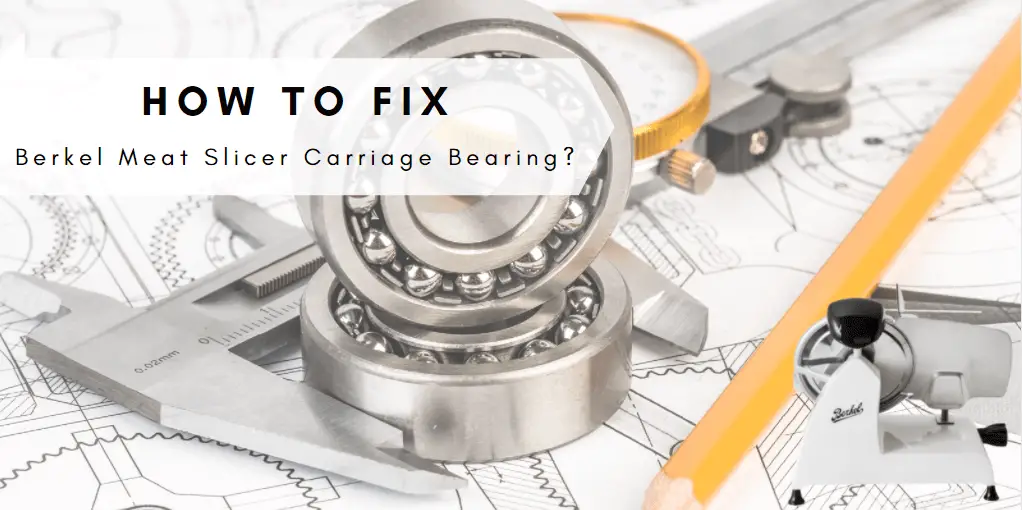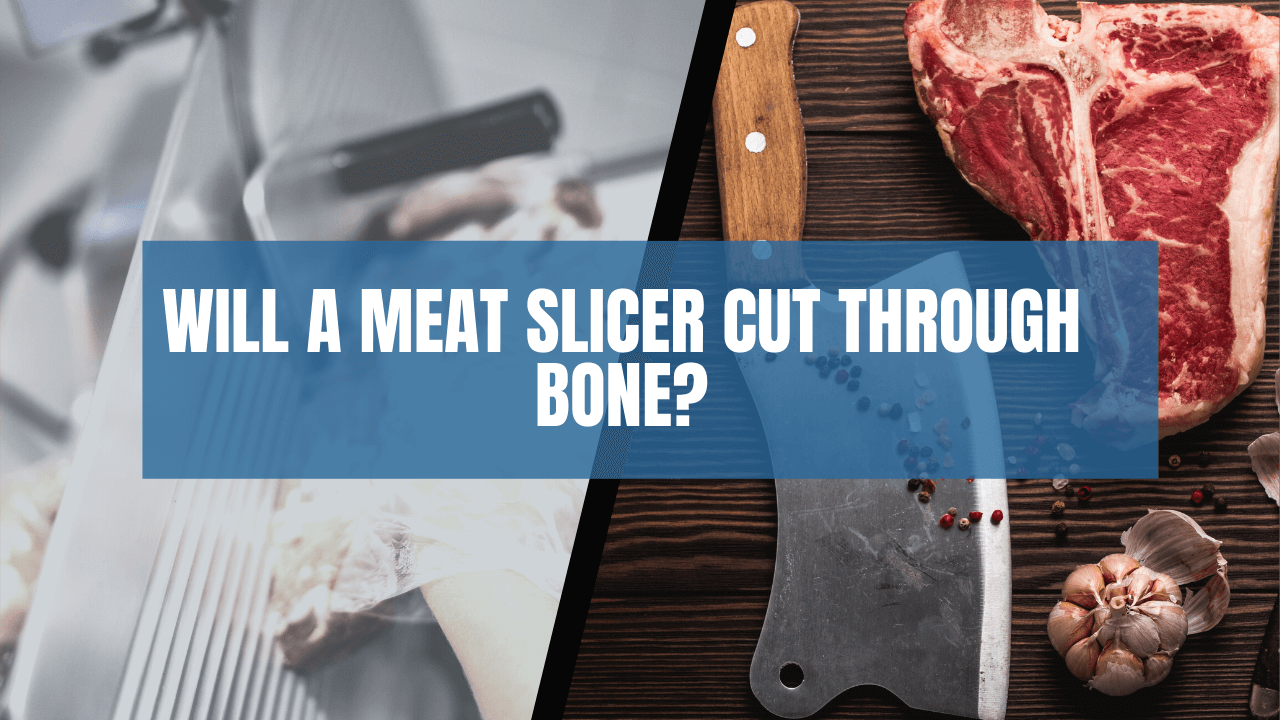Meat cutter/slicer machines are essential kitchen appliances for any home cook, restaurant, or deli that needs to slice meat with precision and efficiency. These machines can save time and effort and help you achieve uniform slices that are difficult to achieve by hand. Design features you should look for when buying a meat cutter/slicer machine, including blade size, motor power, safety features, and more, to help you make an informed decision. With many options available, choosing the right one that fits your needs can be challenging.
Features To Look For When Buying A Meat Cutter/Slicer Machines
Types Of Meat Cutter/Slicer Machines
There are three main types of meat slicers:
- Manual Slicers: These require you to manually move the meat across the blade, making them ideal for occasional use or those on a budget.
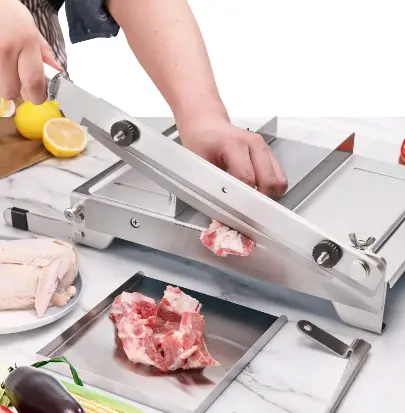
Manual Meat Slicer - Electric Slicers: These slicers use an electric motor to move the blade, reducing the effort required and increasing efficiency. They are perfect for more frequent use or commercial settings.
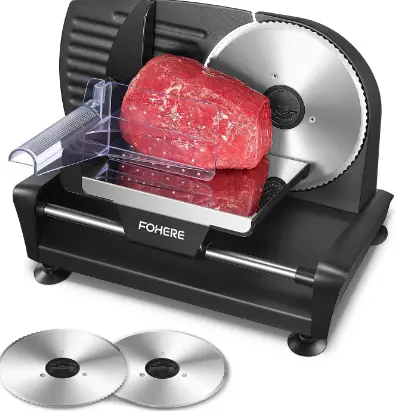
Electric Meat Slicer - Automatic Slicers: These machines automatically move the meat and blade, making them the most efficient option. They are best suited for high-volume commercial use.
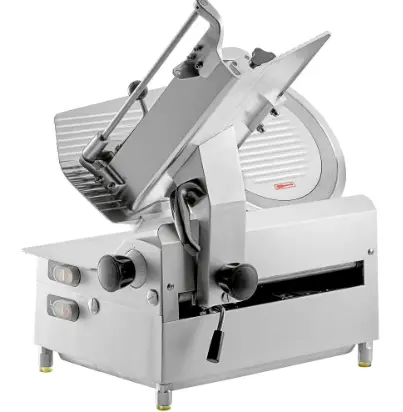
Automatic slicing machine
Blade Size And Material
The blade is the heart of the meat slicer, so it’s essential to consider its size and material:
- Stainless Steel Blades: Stainless steel blades are the industry standard for their durability, sharpness, and corrosion resistance. Ensure the blade is made from high-quality stainless steel for the best performance.
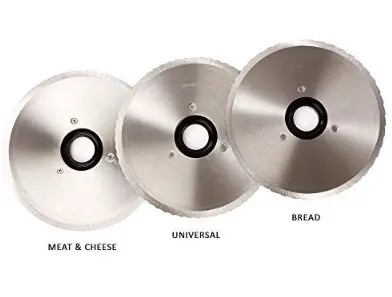
Stainless Steel Blades - Serrated vs. Smooth Edge Blades: Serrated blades are ideal for cutting through tough meats, while smooth edge blades provide clean, precise cuts for delicate meats. Some slicers offer interchangeable blades to suit different needs.
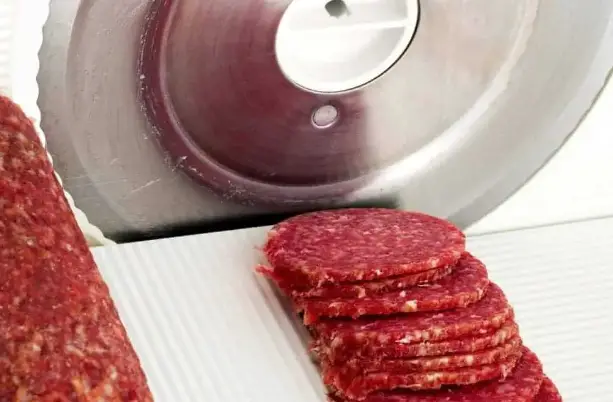
Serrated vs. Smooth Edge Blades
Power And Speed
Motor power and speed control are crucial factors to consider:
- Motor Power: A powerful motor will slice through meat more efficiently and provide consistent results. Look for slicers with at least 1/4 horsepower for home and 1/2 for commercial use.
- Speed Control: Adjustable speed settings allow you to control the slicing process based on the type and thickness of the meat. This feature is especially important for commercial slicers, as it helps maintain consistent results.
Safety Features
Safety should be a top priority when selecting a meat cutter/slicer machine:
- Blade Guard: A blade guard covers the blade’s sharp edge when not in use, preventing accidental cuts. Some slicers also feature a locking mechanism to secure the blade guard.
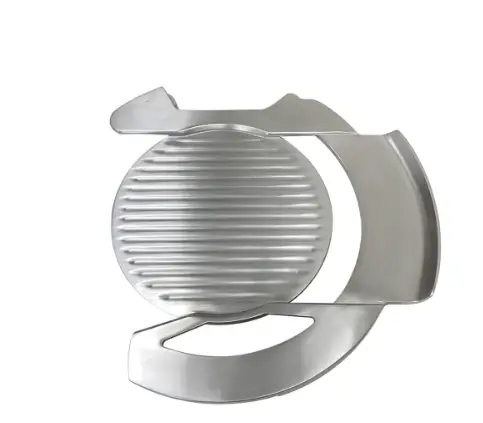
Blade Guard - Non-Slip Feet: Non-slip feet provide stability and prevent the slicer from moving during operation. This feature is crucial for avoiding accidents and ensuring precise slicing.
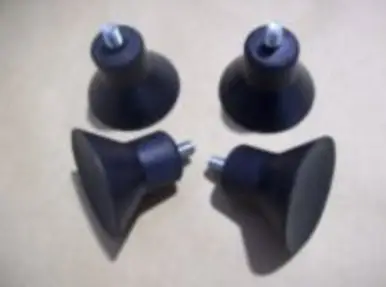
Non-Slip Feet
Ease Of Cleaning And Maintenance
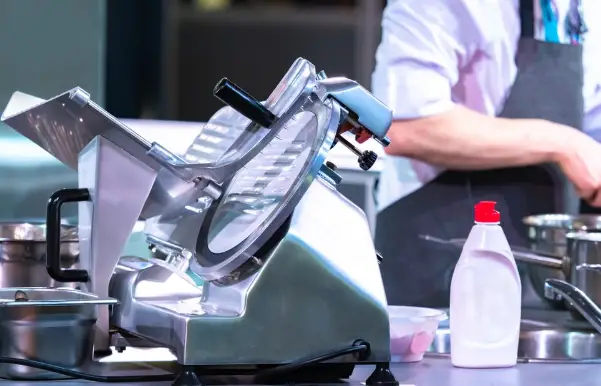
Proper cleaning and maintenance are essential for the longevity and performance of your meat slicer:
- Removable Parts: Look for slicers with easily removable parts, such as the blade, food carriage, and food pusher. This makes cleaning much more manageable and ensures thorough sanitation.
- Cleaning Accessories: Some slicers come with specialized cleaning brushes or tools, making it easier to clean hard-to-reach areas.
Space And Portability
Consider the size and weight of the slicer before making a purchase:
- Compact Design: A compact slicer takes up less counter space, making it ideal for small kitchens or limited storage areas. Remember that smaller slicers may have reduced power and capacity compared to larger models.
- Weight and Portability: A lighter slicer is easier to move and store when not in use. However, heavier slicers tend to be more stable during operation.
Additional Features
Some extra features can enhance the performance and convenience of your meat slicer:
- Built-In Sharpeners: Slicers with built-in sharpeners help maintain the blade’s sharpness, ensuring consistent performance over time.
- Adjustable Thickness Control: This feature allows you to adjust the thickness of the slices, providing greater versatility and precision.
Budget And Warranty
Cost and warranty are important factors to consider:
- Cost Considerations: Determine your budget before shopping, considering that higher-priced slicers typically offer more power, durability, and additional features. Weigh the benefits against the cost to find the best value for your needs.
- Warranty and Customer Support: Look for a slicer with a reliable warranty and responsive customer support. This will give you peace of mind and ensure you have help if any issues arise.
What To Look For When Buying An Industrial Slicer Machine?
- Flexibility: If you need the machine to do various tasks, look for one flexible enough to handle those tasks. For example, some models have adjustable slicing thickness settings and can slice everything from bacon to cheese.
- Safety: Industrial slicer machines can be dangerous if used improperly. Look for safety features such as blade guards and non-slip feet. Also, determine the type of materials used to construct the machine – you want something sturdy and durable.
- Production Rates: An important factor to consider when purchasing a commercial meat slicer is its production rate. The higher the rate, the more product it can produce quickly. This is especially useful for larger businesses that need large amounts of meat sliced quickly and efficiently. The speed at which you can cut your product can help determine how quickly you can serve your customers. It is paramount to ensure the slicer can keep up with customer demand.
- Sanitation: It is essential to consider the sanitation of your meat cutter when looking for one. Look for a model with easy-to-clean removable parts made from high-quality stainless steel. Ensure the machine has safety guards and plastic covers to contain food debris during operation.
How To Use A Meat Slicer?

Step 1: Ensure the power is off/unplugged, and read through the user manual to familiarize yourself with the machine.
Step 2: Place your food item on the slicing platform, securely holding it down.
Step 3: Select an appropriate blade for cutting your item – thicker blades are best suited for harder items such as cheese and vegetables, while thinner blades are best for softer items like bread or meats.
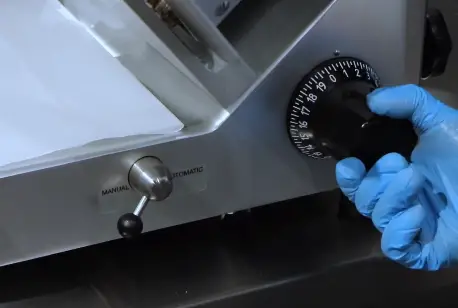
Step 4: Adjust the slicing thickness knob to suit your desired slice thickness.
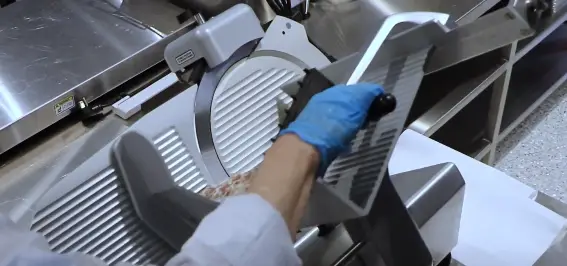
Step 5: Start the machine by pushing down the power switch and pressing the lever forward to activate the blade. Move it back in an even motion to ensure even slices.
Step 6: Once you have finished slicing, turn the power off and unplug the machine before attempting to clean it or remove any food items.
Step 7: Use a cleaning brush to remove excess food particles from the blade and platform, then use a damp cloth with mild detergent to wipe down your slicer.
Step 8: Dry the slicer with a clean cloth before storing it safely away from children and pets.
How To Sharpen A Meat Slicer Blade?
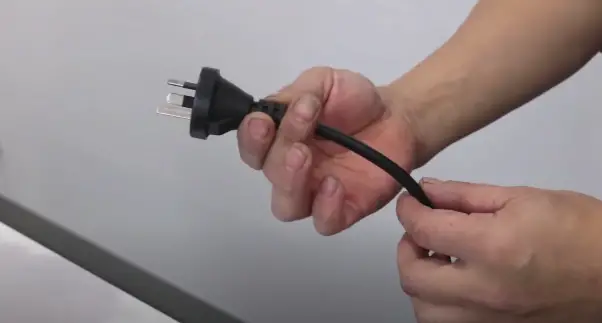
Step 1: Unplug the meat slicer machine and remove the blade before beginning any sharpening process.
Step 2: Clean the blade with a damp cloth and ensure it is free of debris or residue that could interfere with the sharpening process.
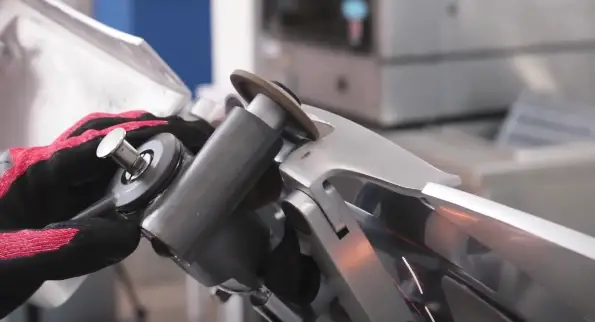
Step 3: Sharpen the blade’s cutting edge using a specialized diamond wheel or ceramic rod. Use a light, consistent motion and sharpen both sides evenly.
Step 4: Remove burrs or chips from the blade using a fine-grade sharpening stone.
Step 5: Take extra care to hone or strop the edges on either side of the cutting edge to give it an extra sharp finish.
Step 6: Reassemble the meat slicer machine and ensure it runs properly before using it again.
FAQs
How often should I sharpen the blade on my meat slicer?
This depends on the frequency of use, but a general rule is to sharpen the blade every few months or when you notice a decrease in slicing performance.
Can I use a meat slicer to slice cheese?
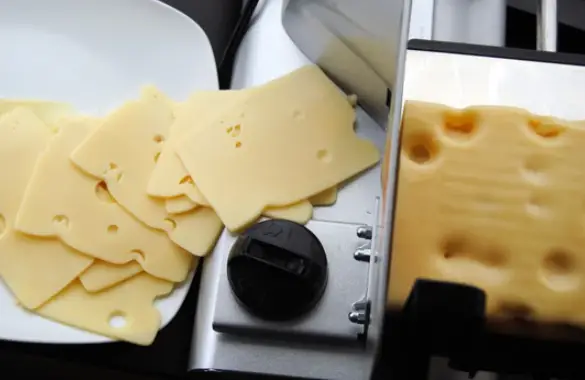
Yes, many meat slicers are suitable for slicing cheese. However, ensure the slicer you choose can handle the specific type of cheese you plan to slice, as some may struggle with soft or sticky cheeses.
What’s the difference between a gravity feed slicer and a vertical slicer?
Gravity feed slicers have a slanted food carriage, allowing gravity to help move the food across the blade. Vertical slicers require more manual effort as the food carriage is positioned vertically. Gravity feed slicers are generally more efficient, while vertical slicers may provide more control over the slicing process.
Do I need a commercial-grade slicer for home use?
Not necessarily. A commercial-grade slicer may be overkill for home use, as they are often larger, more powerful, and more expensive. A high-quality home slicer should be sufficient for most home users. However, if you plan to use the slicer frequently or for large quantities, a commercial-grade slicer may be worth considering.
How do I clean a meat slicer properly?
Unplug the slicer and carefully disassemble the removable parts, such as the blade, food carriage, and food pusher. Clean each part with warm soapy water and a non-abrasive cloth or sponge. Rinse thoroughly and allow the parts to dry before reassembling the slicer. Some slicers may also come with specialized cleaning brushes or tools for more efficient cleaning.
Conclusion
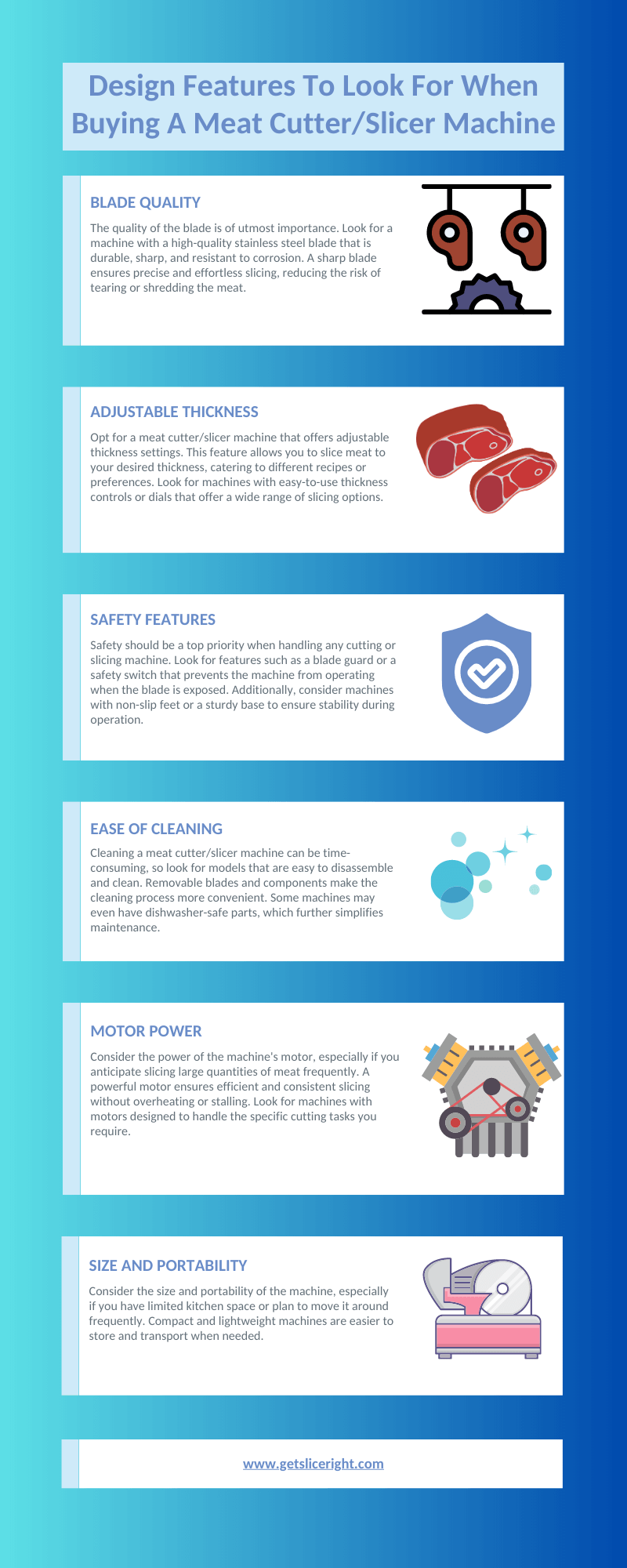
Choosing the right meat cutter/slicer machine requires considering various design features, such as the slicer type, blade size and material, motor power, safety features, ease of cleaning, and additional features. By evaluating these factors and determining your budget, you can make an informed decision and find the perfect slicer for your needs.

Mario Batali is a renowned author, food enthusiast, and passionate chef who has dedicated his life to exploring the world of culinary arts. With a love for sharing his knowledge and experiences, Mario has become a prominent figure in the food blogging community, inspiring countless readers with his creativity and expertise.
In addition to his culinary prowess, Mario Batali is also a talented writer with a flair for engaging storytelling. He launched his own food blog to share his recipes, cooking tips, and personal experiences in the kitchen. Over time, Mario’s blog gained a loyal following of food enthusiasts who appreciate his unique approach to cooking and his dedication to using only the finest ingredients.
Mario Batali’s passion for food and his commitment to sharing his knowledge with others have made him a true inspiration in the world of culinary arts. Through his blog, cookbooks, and public appearances, Mario continues to spread his love of food and the joy of cooking with his ever-growing fanbase.

